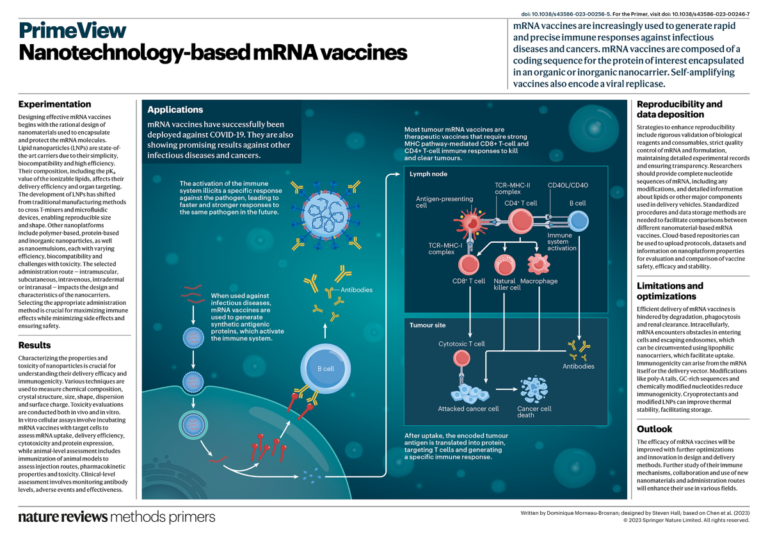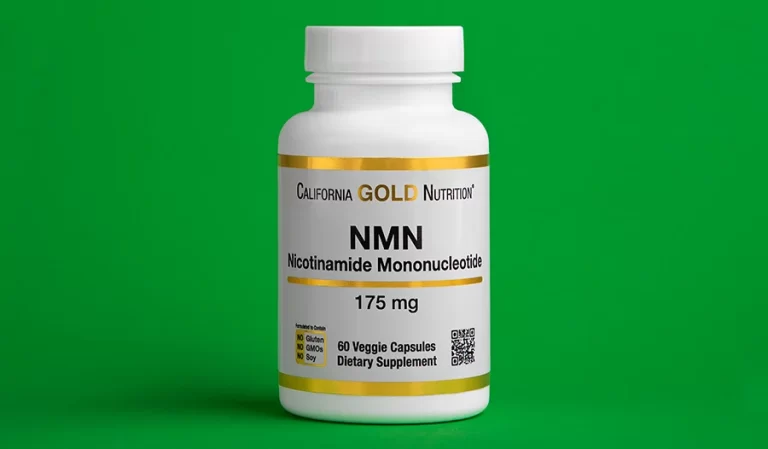The advent of mRNA vaccines has marked a significant milestone in medical science, particularly in the fight against infectious diseases like COVID-19. Central to the success of these vaccines is the use of nanotechnology, which has enabled the effective delivery and efficacy of mRNA-based treatments. This article explores the role of nanotechnology in mRNA vaccines, focusing on the use of nanoparticles, the benefits, challenges, and the future of this groundbreaking approach.
What are mRNA Vaccines?
mRNA vaccines represent a novel approach to immunization. Unlike traditional vaccines, which often use inactivated viruses or protein subunits to stimulate an immune response, mRNA vaccines use messenger RNA (mRNA) to instruct cells to produce a protein that triggers an immune response. This method leverages the body’s own cellular machinery to generate an immune defense against pathogens.
The Role of Nanotechnology in mRNA Vaccines
The effectiveness of mRNA vaccines hinges on the efficient delivery of the mRNA into cells. Here, nanotechnology plays a crucial role. Nanoparticles are used as delivery vehicles to protect the fragile mRNA molecules and facilitate their entry into human cells.
Lipid Nanoparticles (LNPs)
The most prominent type of nanoparticle used in mRNA vaccines is the lipid nanoparticle (LNP). LNPs encapsulate the mRNA, shielding it from degradation and enhancing its uptake by cells. These nanoparticles are composed of lipids that can form stable structures in aqueous environments, which is essential for the delivery of mRNA in the human body.
LNPs serve multiple functions:
- Protection: mRNA is inherently unstable and can be rapidly degraded by enzymes in the body. LNPs protect mRNA from enzymatic degradation, ensuring it remains intact until it reaches its target cells.
- Targeting: LNPs can be engineered to target specific types of cells or tissues, enhancing the precision and efficiency of the vaccine.
- Facilitation of Cellular Entry: The lipid composition of LNPs allows them to fuse with cell membranes, facilitating the entry of mRNA into the cells where it can then be translated into the desired protein.
Benefits of Nanotechnology-based mRNA Vaccines
The use of nanoparticles in mRNA vaccines offers several significant advantages:
- Rapid Development and Production: mRNA vaccines can be developed and manufactured more quickly than traditional vaccines. The process of synthesizing mRNA and formulating it with nanoparticles is relatively fast, enabling rapid responses to emerging infectious diseases.
- Enhanced Immune Response: The delivery of mRNA via nanoparticles ensures that the mRNA reaches the cells efficiently, resulting in a robust immune response. This method can induce both antibody-mediated and T-cell-mediated immunity, providing comprehensive protection against infections.
- Versatility: Nanoparticle-based delivery systems can be adapted to various mRNA sequences, making it possible to develop vaccines for a wide range of diseases, including viral infections, cancer, and other chronic conditions.
- Safety: mRNA vaccines do not use live virus components, which reduces the risk of infection. The use of nanoparticles ensures that the mRNA is delivered safely and effectively.
Challenges in Nanotechnology-based mRNA Vaccines
Despite the promising benefits, there are challenges that need to be addressed:
- Stability and Storage: mRNA vaccines, particularly those using LNPs, require stringent storage conditions, typically at very low temperatures. Ensuring stability and maintaining the cold chain during distribution is a significant logistical challenge.
- Manufacturing Complexity: The production of nanoparticles and their formulation with mRNA requires sophisticated technology and facilities. Scaling up production to meet global demand can be complex and costly.
- Safety and Regulatory Approval: Ensuring the long-term safety of nanoparticles in the human body is critical. Comprehensive preclinical and clinical trials are necessary to demonstrate safety and efficacy. Regulatory frameworks must evolve to address the unique aspects of nanotechnology-based vaccines.
The Future of Nanotechnology-based mRNA Vaccines
The success of mRNA vaccines in combating COVID-19 has paved the way for further advancements in this field. Researchers are exploring new types of nanoparticles and improving existing ones to enhance the delivery and effectiveness of mRNA vaccines.
Personalized Vaccines
One exciting area of research is the development of personalized mRNA vaccines. By sequencing a patient’s genome, scientists can design mRNA vaccines tailored to the individual’s specific genetic makeup, potentially offering more effective treatments for diseases like cancer.
Broader Disease Targets
Nanotechnology-based mRNA vaccines are not limited to infectious diseases. They hold promise for a wide range of applications, including:
- Cancer Immunotherapy: mRNA vaccines can be designed to produce tumor-specific antigens, training the immune system to recognize and attack cancer cells.
- Autoimmune Diseases: mRNA technology can potentially be used to modulate immune responses in autoimmune conditions, offering new therapeutic approaches.
- Rare Genetic Disorders: By delivering therapeutic mRNA, it may be possible to correct genetic defects at the molecular level, providing treatments for rare genetic disorders.
Advances in Nanoparticle Technology
Researchers are continually working on improving nanoparticle technology. Some areas of focus include:
- Biodegradable Nanoparticles: Developing nanoparticles that degrade safely in the body to minimize long-term side effects.
- Targeted Delivery: Enhancing the ability of nanoparticles to target specific tissues or cells, improving the precision of mRNA delivery.
- Thermostable Formulations: Creating mRNA vaccine formulations that remain stable at higher temperatures, simplifying storage and distribution logistics.
Conclusion
Nanotechnology-based mRNA vaccines represent a significant breakthrough in modern medicine. The use of nanoparticles in mRNA vaccines has proven to be a game-changer, enabling rapid development, effective delivery, and robust immune responses. While challenges remain, ongoing research and technological advancements will likely overcome these hurdles, paving the way for broader applications and more accessible vaccines.
The success of mRNA vaccines against COVID-19 is just the beginning. As we continue to unlock the potential of nanotechnology in medicine, the future holds immense promise for the development of new and more effective vaccines and treatments for a wide range of diseases. For more information on the role of nanoparticles in mRNA vaccines, the ongoing research and advancements are worth following closely as they shape the future of healthcare.










